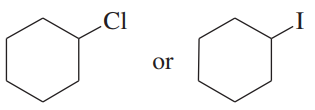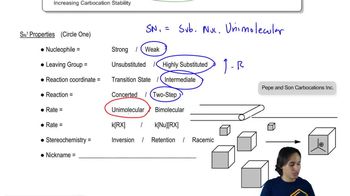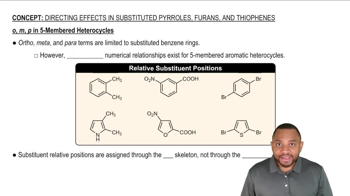a. Assuming that the two compounds shown below have the same stability, which one would you expect to be more reactive in an SN1 reaction?
b. Draw the products that each would form when the solvent is ethanol.


 Verified step by step guidance
Verified step by step guidance Verified video answer for a similar problem:
Verified video answer for a similar problem:



 1:49m
1:49mMaster Drawing the SN1 Mechanism with a bite sized video explanation from Johnny
Start learning